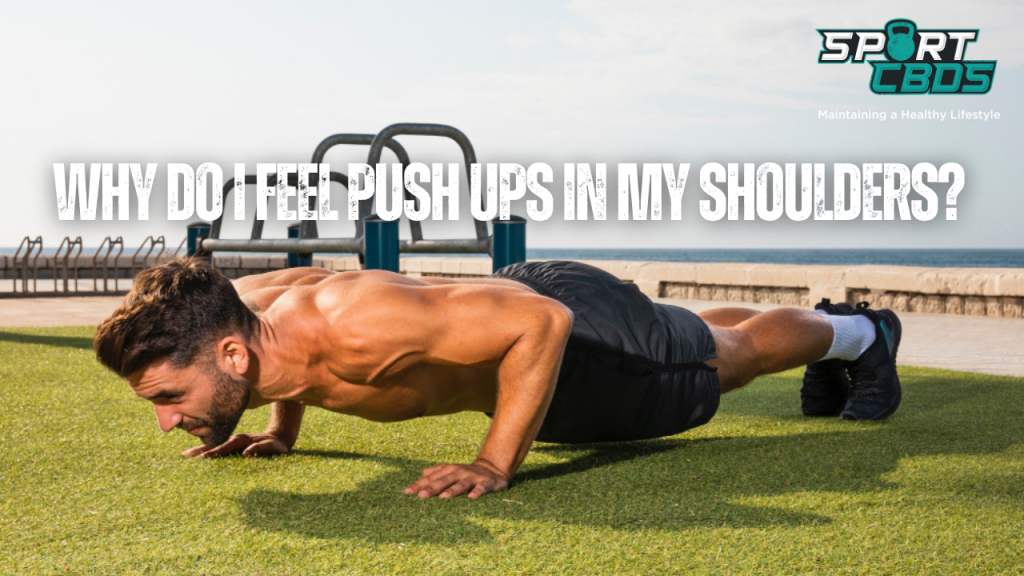
Why Are My Shoulders So Narrow? Uncovering the Factors and Strategies for Improvement
Have you ever caught your reflection and thought, “Why are my shoulders so narrow?” You’re certainly not the only one.
Shoulder width is crucial in overall appearance and fitness, and many individuals aspire to have wider, more sculpted shoulders.
In this article, we’ll delve into the various factors that contribute to narrow shoulders and suggest strategies for improvement. So, let’s jump right in!
Why Are My Shoulders So Narrow?
If you’ve ever pondered the question, “Why are my shoulders so narrow?” you should know that several factors can contribute to this appearance. The complex structure of the shoulder joint, including the clavicle, scapula, and humerus, along with key muscles such as the deltoids, trapezius, and rotator cuff muscles, plays a significant role in determining shoulder width. Age also impacts shoulder width, with growth spurts during adolescence leading to increased width, and factors like muscle atrophy, decreased bone density, and posture changes affecting width as we age. Additionally, genetics, body composition, and even the types of exercises and training habits you engage in can all play a part in the width of your shoulders. By understanding these factors and implementing targeted strategies, such as a well-rounded exercise routine, proper nutrition, and focusing on posture, you can work towards enhancing your shoulder width and achieving your desired aesthetic.
Grasping Shoulder Anatomy
Before we dive into the reasons behind your narrow shoulders, it’s essential to comprehend the fundamental structure of the shoulder and the muscles responsible for its development. The shoulder, a complex joint comprising the clavicle (collarbone), scapula (shoulder blade), and humerus (upper arm bone), is among the most flexible joints in our body, enabling us to carry out a wide range of daily activities and sports.
Key muscles involved in shoulder development include the deltoids (anterior, medial, and posterior), trapezius, and rotator cuff muscles. These muscles collaborate to ensure stability, strength, and a broad range of motion for the shoulder joint.
The Impact of Age on Shoulder Width
As we mature, our shoulder width evolves. Adolescence brings about a growth spurt in both males and females, resulting in increased shoulder width. However, males usually have wider shoulders than females due to hormonal distinctions.
As we grow older, factors such as muscle atrophy, diminished bone density, and changes in posture may alter our shoulder width. To minimise age-related changes, it’s vital to maintain a healthy lifestyle, which includes regular exercise and a well-balanced diet.
Imbalances or Health Conditions Influencing Shoulder Width
Various imbalances or health conditions can impact shoulder width. For instance, posture-related problems like rounded shoulders or forward head posture might create the illusion of narrow shoulders. To enhance shoulder appearance, you can address these issues with corrective exercises and by maintaining proper posture.
Shoulder joint injuries or surgeries, congenital conditions such as brachial plexus palsy, and scoliosis can also affect shoulder width. Collaborating with a healthcare professional to manage these conditions and devise a suitable exercise plan is crucial.
Establishing Goals for Shoulder Development
When working on expanding your shoulders, it’s essential to set attainable goals based on your unique needs and constraints. Some individuals may have aesthetic objectives, like achieving a V-taper or enhancing body proportions. Others might concentrate on functional or athletic targets, such as boosting shoulder strength and mobility.
Evaluate your current shoulder width, consider your limitations, and set well-defined, reachable goals for improvement. Doing so will keep you motivated and focused on your progress.

Body Composition and Shoulder Width
Body composition also has a bearing on shoulder width. Ectomorphs, mesomorphs, and endomorphs each possess distinct body structures that can influence shoulder appearance. Ectomorphs usually have a lean and slender frame, causing their shoulders to look narrower. Mesomorphs exhibit a more muscular physique, while endomorphs have a rounder, more robust frame.
To widen your shoulders, it’s crucial to implement a training and nutrition plan customised to your body type. For instance, ectomorphs might need to emphasise resistance training and increased calorie intake, while endomorphs could benefit from combining resistance training with cardiovascular exercise.
The Impact of Genetics on Shoulder Width
Genetics significantly affect shoulder width determination. Your genes influence factors such as clavicle length, muscle fiber composition, and bone density. If narrow shoulders run in your family, you may be more prone to a similar shoulder structure.
Although you can’t alter your genetics, comprehending your genetic predisposition can help you create a training strategy that optimises your shoulder development potential.
Related: Do Lateral Raises Work the Traps as Well as Shoulders?
Slow and Fast Twitch Muscle Fibres
There are two primary muscle fibre types: slow-twitch (type I) and fast-twitch (type II) fibres. Slow-twitch fibres, which have a smaller diameter, cater to endurance, while fast-twitch fibres, with a larger diameter, focus on strength and power. The balance of these muscle fibres in your shoulders can affect their development and overall appearance.
Incorporating a range of training techniques, such as heavy compound exercises, high-rep isolation movements, and dynamic activities, can target both slow and fast-twitch fibres. This approach will promote more balanced shoulder growth.
Bone Structure’s Influence on Shoulder Width
The length of your clavicle plays a critical role in determining shoulder width. People with longer clavicles naturally exhibit broader shoulders, while those with shorter clavicles may appear to have narrower shoulders. While you cannot modify your clavicle length, you can develop the adjacent muscles to create the impression of wider shoulders.
Concentrate on building your deltoids and upper back muscles to provide your shoulders with a rounder, fuller look. Additionally, improving your overall posture can enhance your shoulder appearance.
Training Consistency’s Significance
Attaining your desired shoulder width necessitates maintaining consistency in training, nutrition, and recovery. Without this consistency, progressing and sustaining your achievements become difficult.
Persevere through plateaus and setbacks, which are inherent to the process. Adjust your training regimen as required to keep progressing. Balancing training with adequate recovery and rest is crucial to avoid overtraining and injuries.
Training Methods for Shoulder Width Development
Incorporate diverse training approaches that focus on different aspects of shoulder growth to effectively widen your shoulders. Resistance and hypertrophy-centric exercises are crucial for muscle mass building. Compound movements, such as military presses and pull-ups, engage multiple muscle groups and contribute to overall shoulder strength. Isolation exercises, like lateral and front raises, target specific shoulder muscles for a more balanced growth.
Include mobility and flexibility exercises in your training routine to maintain healthy shoulder joints and prevent injuries, allowing for continuous progress.
Addressing Common Mistakes and Poor Exercise Execution
Incorrect form and technique during exercises can impede shoulder growth and heighten injury risk. Common errors include using excessive weights, failing to engage target muscles fully, and skipping proper warm-up and stretching routines.
Consult a fitness professional or watch instructional videos from trusted sources to ensure correct exercise performance. Rectifying these mistakes can significantly enhance your shoulder development and overall progress.
Mind-Muscle Connection in Shoulder Training
The mind-muscle connection refers to consciously focusing on and engaging the target muscle group during exercise. This connection is vital for shoulder growth, as it guarantees the proper activation and workout of the relevant muscles.
To strengthen your mind-muscle connection, try using visualization techniques, slower rep tempos, and tactile cues (such as touching the working muscle) during your shoulder training sessions. These methods can improve your focus, leading to more effective workouts and superior results.
Related: Why is the OHP Considered Superior to the Bench Press?
Shoulder Workout
Perform this workout 1-2 times per week, allowing adequate recovery time between sessions (48-72 hours). Make sure to maintain proper form and technique during exercises to prevent injury and maximize shoulder development. Adjust the weight, sets, and repetitions according to your fitness level and progress. Don’t forget to maintain a balanced diet, focusing on consuming adequate protein to support muscle growth and recovery.
Warm-Up:
- Arm circles – 2 sets x 10 reps (each direction)
- Shoulder rolls – 2 sets x 10 reps (forward and backward)
Compound Exercises:
- Military press (barbell or dumbbell) – 4 sets x 8-10 reps
- Pull-ups (wide grip) – 4 sets x 8-10 reps
Isolation Exercises:
- Lateral raises – 4 sets x 12-15 reps
- Front raises – 4 sets x 12-15 reps
- Rear deltoid flyes – 4 sets x 12-15 reps
Superset (for muscle endurance and targeting slow-twitch fibres):
1A. Face pulls – 3 sets x 15-20 reps 1B. High cable rope rear delt rows – 3 sets x 15-20 reps
Explosive Movement (for fast-twitch fibres):
- Push press – 3 sets x 6-8 reps
Mobility and Flexibility Exercises:
- Doorway stretch – 2 sets x 30 seconds hold (each side)
- Cross-body shoulder stretch – 2 sets x 30 seconds hold (each arm)
Frequently Asked Questions
How can I widen my narrow shoulders?
To widen your narrow shoulders, focus on a combination of resistance training, incorporating compound and isolation exercises, targeting both slow and fast-twitch muscle fibres, and maintaining consistency in your training, nutrition, and recovery. Additionally, work on your posture and address any imbalances or medical conditions that may be affecting your shoulder width.
Why do I have very narrow shoulders?
There are several factors that can contribute to narrow shoulders, including genetics, bone structure (particularly clavicle length), muscle fibre composition, body type, and age-related changes. Imbalances or medical conditions affecting the shoulder joint may also play a role.
How do I make my shoulders less narrow?
To make your shoulders less narrow, focus on building the deltoid and upper back muscles through a combination of compound and isolation exercises. Prioritise training consistency, tailor your program to your body type, and address any underlying imbalances or medical conditions that may be impacting your shoulder width.
Are narrow shoulders genetic?
Yes, genetics can play a significant role in determining shoulder width. Factors such as clavicle length, muscle fiber composition, and bone density are influenced by your genes. Understanding your genetic predisposition can help you develop a training plan that maximises your shoulder development potential.
What body type has narrow shoulders?
Ectomorphs typically have a lean and slender frame, which can make their shoulders appear narrower. Mesomorphs tend to have a more muscular build, while endomorphs have a rounder, stockier frame. It’s important to tailor your training and nutrition plan to your specific body type to achieve the best results in shoulder width development.
Final Thoughts…
In conclusion, there are several factors contributing to narrow shoulders, including shoulder anatomy, age, body composition, genetics, and training habits.
By understanding these factors and implementing the strategies discussed in this article, you can work towards improving your shoulder width and achieving your desired appearance. Remember, consistency, proper technique, and patience are key to success. Happy training!
Do you have narrow shoulders and have these tips helped? Let me know in the comments section below.
If you enjoy sports and use CBD to help with your recovery in between gruelling workouts, then you are in the right place. Here at Sport CBDs, we train hard and recover the best way possible…
We have regular workouts (check out the YouTube channel), CBD news and CBD products to help you gain that edge!
If you wanted to check out the reputable CBD we have on offer here at the site, then please head to the Sport CBDs Store (CLICK HERE). We also do fitness clothing and yoga accessories too.
Until next time, all the best…
Lee
Founder – Sport CBDs
Featured Image Attribution – Image by wayhomestudio on Freepik


